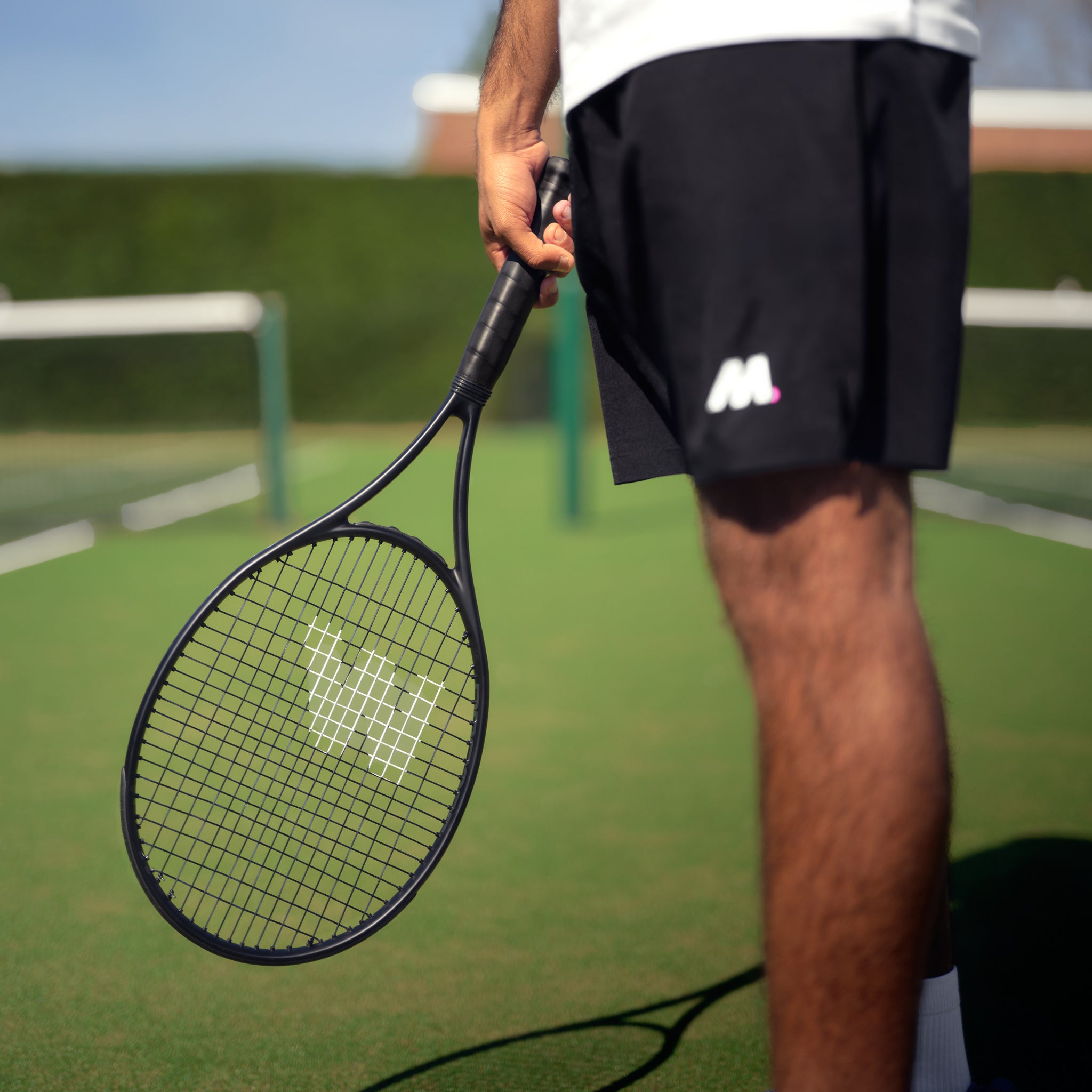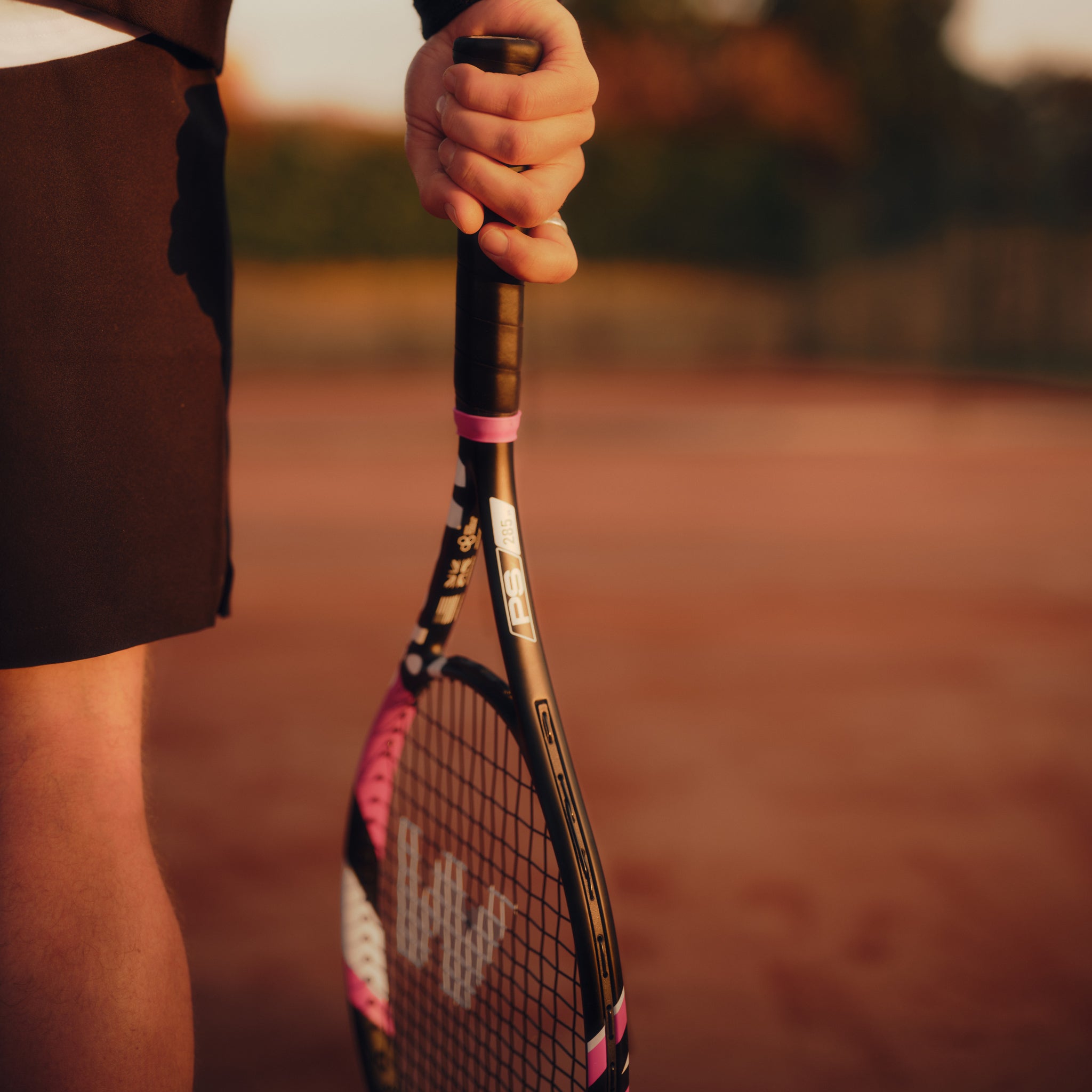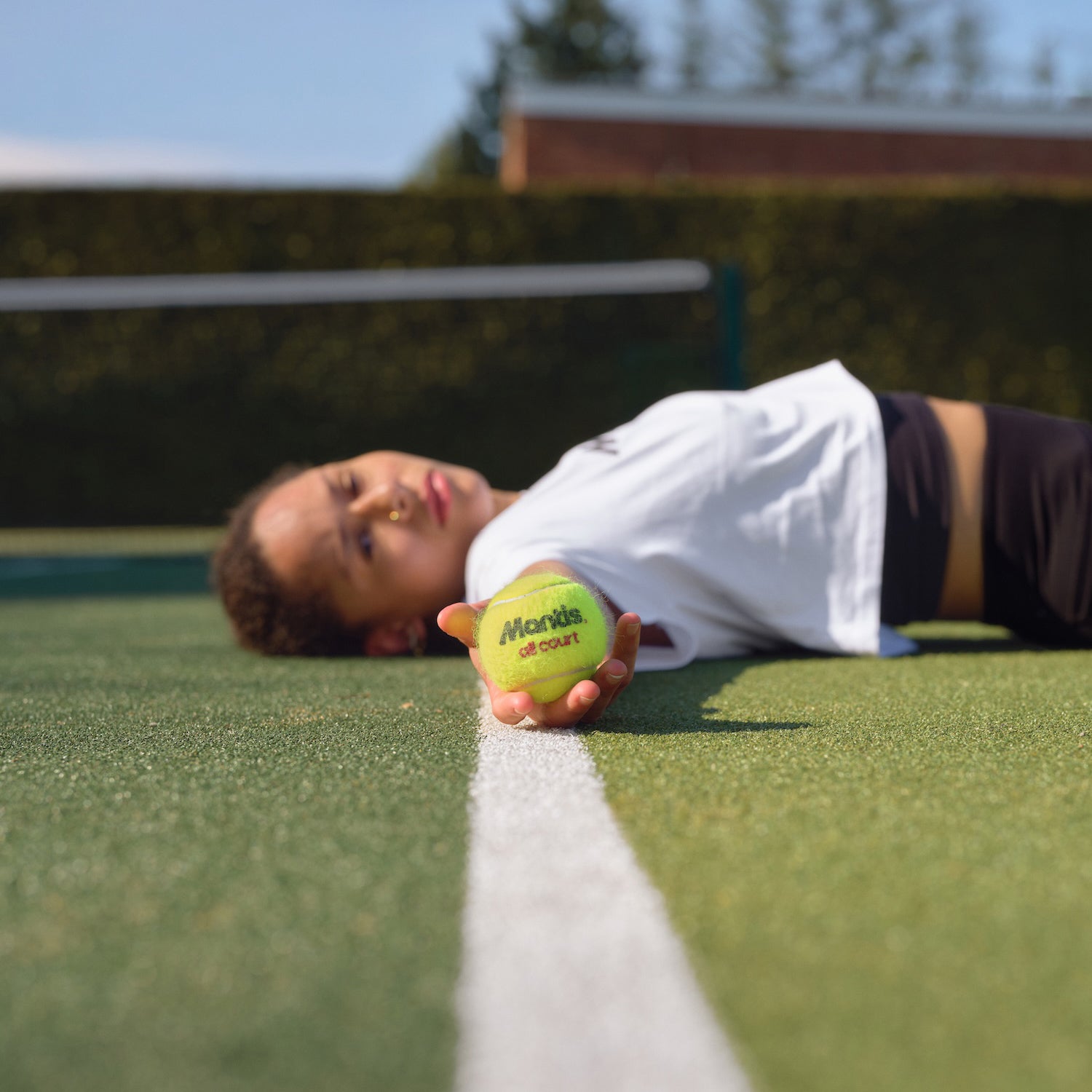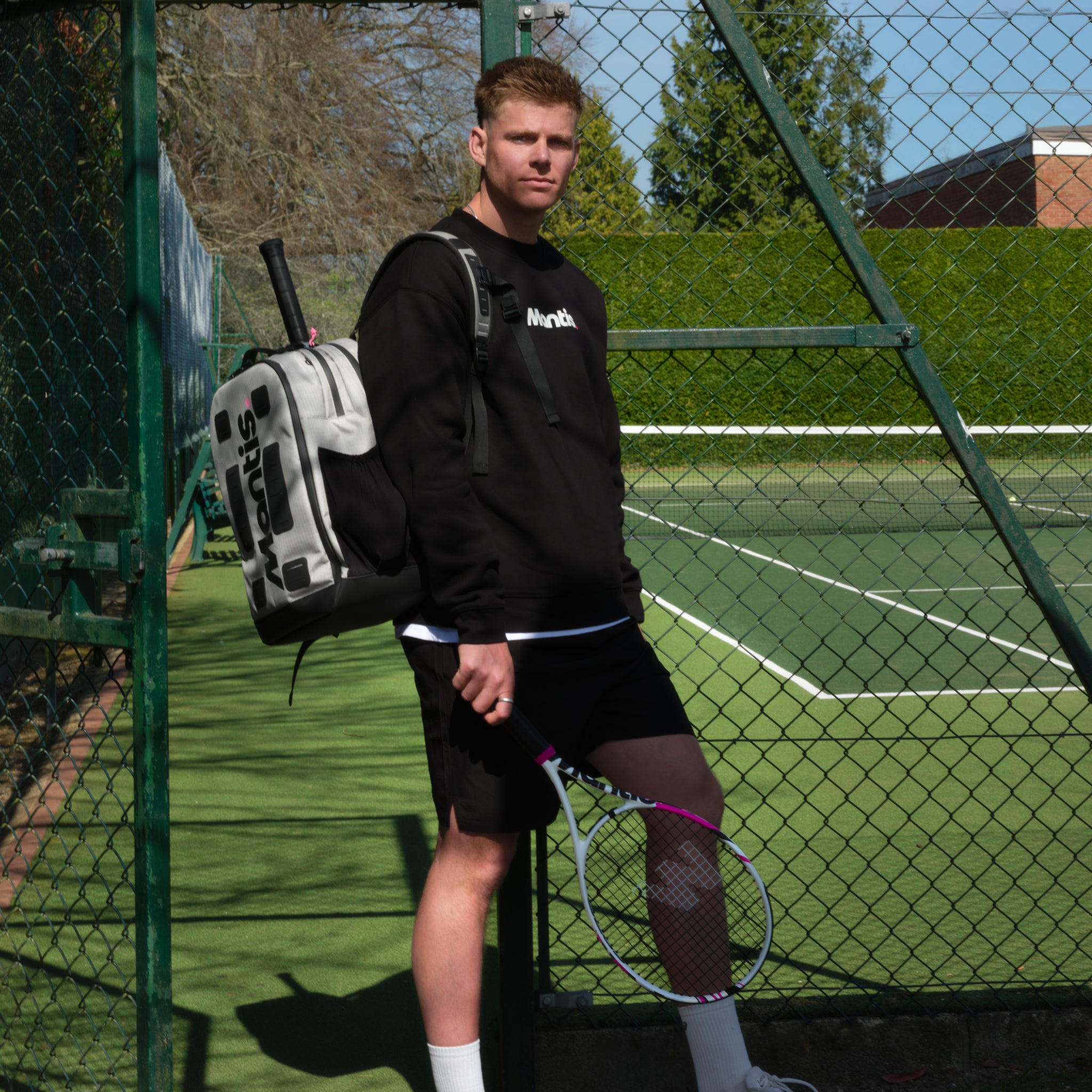
So, what exactly is the amateur tennis scene? In simple terms, it's about playing the sport for the love of it, not for a pay cheque. It's the world of tennis that exists outside the professional tour—from a friendly knock-about at the local park to the nail-biting final of a competitive club league. From a friendly knock-about at the local park to the nail-biting final of a competitive club league, we've outlined everything you need to know in our guide to UK club tennis. It's defined by passion, not professional status, and we're here to guide you through this exciting world where community, personal improvement, and the sheer joy of the game rule the court.
Exploring the World of the Amateur Tennis Scene
When you hear "amateur tennis," it's easy to picture a couple of players who can barely get a rally going. But that's a huge misconception. The amateur scene is actually a massive, vibrant community filled with players of all abilities, from absolute beginners just getting to grips with the basics to seriously skilled competitors who simply aren't pursuing a professional career.
What truly defines an amateur isn't a lack of skill; it's the reason they play. Amateurs are out on the court for fun, for fitness, and for the friendships that come with it. It’s all about the personal challenge and sharing a passion with others.
A Growing Community in the UK
Lately, amateur tennis in the UK has exploded in popularity, hitting numbers we've never seen before. A recent report from the Lawn Tennis Association (LTA) showed that around 2 million adults were playing tennis every month—the highest figure ever recorded.
That’s a whopping 43% increase from the year before, fuelled by a wave of younger players picking up a racquet and a fantastic rise in women's participation, which now accounts for 41% of all adult players.
This growth really points to a wider shift towards sports that are more accessible and welcoming. The amateur scene is built on this very idea, opening its arms to everyone, no matter their age or how well they can hit a forehand. It's a space where just getting involved and getting better is the main goal.
The spirit of amateur tennis lies in its accessibility. It's not about being the best in the world; it's about being your best self on the court, celebrating small victories, and belonging to a community that shares your enthusiasm.
What Defines the Amateur Player
At its heart, being an amateur player means you don't get paid to compete. This simple distinction creates an environment where sportsmanship and a genuine love for the game can flourish. Here’s what the amateur experience is all about:
- Passion Over Pay: The real motivation comes from the thrill of the game itself, not from prize money or sponsorship deals.
- Community and Connection: Amateur tennis is incredibly social. It’s a brilliant way to join clubs, play in local leagues, and meet people who love the sport as much as you do.
- A Journey of Improvement: Players are driven by their own goals, whether that’s finally mastering a slice backhand, getting fitter, or just enjoying a well-fought competitive match.
This foundation makes amateur tennis an incredibly rewarding hobby, offering benefits for your mind and body that go way beyond the tramlines. It's all about the journey, not just the final score.
Making Sense of Tennis Rules and Scoring
Let’s be honest, the weird scoring system in tennis can feel like a huge hurdle when you’re just starting out. It looks complicated from the outside, but once you get the hang of it, it’s actually pretty straightforward. Think of it like learning the rules to a new board game – you just need to understand how points build into games, and games build into sets.
At its core, the goal is simple: hit the ball over the net and into your opponent's court so they can't legally hit it back. You win a point if your opponent messes up – maybe they hit the ball into the net, send it sailing past the lines, or can't get to it before it bounces twice.
Understanding the Scoring System
The first thing that trips everyone up is the terminology: 'love', '15', '30', '40'. Why not just 1, 2, 3, 4? It’s a bit of a historical quirk. The most common theory is that 'love' for zero comes from the French word l'oeuf, meaning egg, because of its resemblance to a zero.
Here’s a quick breakdown of how points work within a single game:
- 0 points = Love
- 1 point = 15
- 2 points = 30
- 3 points = 40
- 4 points = Game
To win a game, you need to score four points, but you also have to win by at least two. This is where things get interesting and you hear terms like 'deuce' and 'advantage'.
Key Scoring Scenarios
When the score is tied at 40-40, we call it deuce. This is where the pressure really mounts. To win the game from deuce, you have to win two points in a row.
If you win the point at deuce, you get the advantage. You’ll hear umpires say "ad-in" if the server has the advantage, or "ad-out" if the receiver does. If you win the very next point, you’ve won the game. But if you lose it, the score snaps right back to deuce.
The deuce and advantage rule is brilliant because it stops a game being decided by a single lucky shot. It forces a player to prove they can hold their nerve and dominate a crucial moment by winning two consecutive points.
Once a game is won, you move on to trying to win the set. A set is won by the first player to win six games, as long as they are ahead by at least two (so, 6-4 is a set, but 6-5 is not). If the score reaches 6-6, you’ll usually play a tie-break to decide the winner. A tie-break is a race to seven points (again, winning by two).
Most matches are played as the best of three or five sets. See? It's all about building blocks: from points to games, and from games to sets. Once you grasp that progression, you’ve cracked the code of tennis scoring.
Mastering the Fundamental Tennis Skills
If you want to get better at tennis, it all starts with building a solid foundation. Here at Mantis, we've seen countless players transform their game by knuckling down and getting to grips with the four fundamental strokes: the forehand, backhand, serve, and volley. Think of these as your toolkit – master the right grip, stance, and swing for each one, and you'll have everything you need to build confidence and start winning points.
It’s a gradual process, of course. First, you're just trying to get the ball over the net. Then, you start to work on where it goes and how deep you can hit it.
Developing Your Core Strokes
Every single rally is a conversation between your forehand and your backhand. The forehand is usually the first shot people learn, and for many, it becomes their biggest weapon. It’s hit on your dominant side (your right side if you're right-handed), typically with one hand, using a smooth swing that travels from low to high across your body.
The backhand, on the other hand, can feel a bit awkward at first. You've got a choice here: a one-handed stroke gives you a bit more reach, while a two-handed grip offers more stability and power. The two-hander has become incredibly popular in the amateur game for good reason. For both of these "groundstrokes," your number one goal should be simple consistency.
When you're starting out, developing good habits is everything. The table below breaks down what you should focus on for each key stroke and what common pitfalls to sidestep.
Beginner Stroke Development Focus
| Stroke | Key Focus for Beginners | Common Mistake to Avoid |
|---|---|---|
| Forehand | A smooth, continuous swing from low to high. Focus on rotating your body and hitting through the ball. | "Arming" the ball – hitting with only your arm instead of using your whole body's momentum. |
| Backhand | Finding a comfortable grip (one or two-handed) and maintaining good balance throughout the shot. | Not preparing early enough; letting the ball get too close to your body before you swing. |
| Serve | Developing a consistent ball toss and a fluid, relaxed throwing motion. Consistency over power! | Trying to hit it as hard as possible, which tightens up your muscles and ruins your timing. |
| Volley | A short, compact "punching" motion with a firm wrist. Keep the racquet head in front of you. | Taking a big swing like a groundstroke, which results in a loss of control and timing. |
This isn't about hitting the perfect shot every time. It’s about building a reliable foundation you can count on under pressure.
Here are a couple of simple drills to get you started:
- Wall Hitting: A practice wall is your best friend. Just hit forehands and backhands against it and try to keep a rally going with yourself. Aim for a specific spot to build control.
- Cross-Court Rallies: Grab a partner and stand on opposite sides of the court. Your goal is to hit the ball diagonally back and forth, which is a fantastic way to build both consistency and stamina.
The Serve and The Volley
The serve is, without a doubt, the most important shot in tennis. Why? It's the only one you have 100% control over. When you're just starting, forget about blasting aces. Your mission is to develop a reliable, repeatable motion. Focus on the basic flat serve, getting a smooth throwing action and making clean contact with the ball.
The volley is its polar opposite. It's a quick, sharp, punching shot you hit at the net before the ball bounces. It’s all about fast reflexes and keeping your wrist firm.
Mastering the fundamentals isn't about perfection from day one. It's about repetition and muscle memory. Committing to simple, consistent practice is what separates players who improve from those who stagnate.
The Unsung Hero: Footwork
You can have the most beautiful strokes in the world, but they're useless if you can't get to the ball. That’s where footwork comes in. Moving efficiently gets you in the perfect position to hit your shot, which instantly improves your balance, power, and consistency.
The secret? Stay on the balls of your feet, not flat-footed, and use lots of small, quick adjustment steps to fine-tune your position. Good court awareness is about reading where your opponent is going to hit and then getting back to the centre of the court after every shot you make. Ignoring your footwork is one of the single biggest mistakes an amateur player can make, as it undermines everything else you're trying to do.
Choosing Your First Tennis Gear
Picking the right equipment can make a world of difference to how much you enjoy yourself on court, not to mention how well you play. If you're just getting into amateur tennis, the sheer number of options can feel a bit much, but we're here to help you cut through the noise. We'll guide you towards the perfect gear for your game without you having to spend a fortune, making sure you get kitted out with equipment that will help you improve from day one.
To get started on this crucial first step, have a look at our in-depth guide on how to choose a tennis racket.
Your racquet is the most important tool you'll own, and getting your head around a few key ideas will make finding the right one a lot easier. Racquets are usually classified by their balance point, which makes them either head-heavy or head-light.
- Head-heavy racquets: As the name suggests, these have more weight loaded into the head. This extra mass helps you generate more power in your shots, which is a massive help for beginners who are still finding their swing.
- Head-light racquets: With more of the weight in the handle, these racquets feel quicker in the hand and offer much more control and manoeuvrability. You'll typically see more experienced players using these, as they can create their own power and just need the racquet for precision.
For most people starting out, a racquet with a larger head size (over 100 square inches) and a slightly head-heavy balance is the perfect sweet spot. It gives you a great mix of easy power and a forgiving sweet spot for those off-centre hits.
Shoes and Apparel: The Foundation of Movement
While the racquet grabs all the headlines, your shoes are arguably just as vital for keeping you injury-free and helping you perform. Tennis isn't about running in a straight line; it's a game of explosive, sideways movements—stopping on a sixpence, sprinting, and changing direction instantly. Your running trainers just aren't built for that.
Proper tennis shoes give you the crucial lateral support needed to protect your ankles during all that side-to-side shuffling. They also have tough, non-marking soles made specifically for court surfaces. Honestly, investing in a good pair of tennis shoes is non-negotiable if you plan on playing regularly.
When it comes to clothing, the name of the game is comfort and mobility. Just look for lightweight, breathable fabrics that will wick sweat away and keep you dry. You don't need to splash out on expensive designer gear; you just need clothes that let you move freely without getting in your way.
Completing Your Kit
Finally, a few other bits and bobs will round out your kit. It's always a good idea to have a fresh can of tennis balls in your bag. Balls are actually designed for different surfaces (like clay, hard court, or grass), but a good quality all-court ball is a versatile choice that will do the job in most amateur settings.
A decent tennis bag will also make your life easier, helping you keep everything organised with separate compartments for your racquets, shoes, balls, and personal bits.
The best gear for an amateur player isn’t the most expensive—it’s the equipment that feels right for your current skill level and supports your goals for improvement. Focus on finding value and performance to build a kit that will grow with your game.
Finding Your Place in the UK Tennis Scene
Tennis is a fantastic way to keep fit, but let's be honest—it’s the social side that really makes the sport special. Getting plugged into the UK’s thriving amateur tennis community is much easier than you might imagine, whether you're after a friendly knock-about or a proper competitive league match.
From joining a local club to simply booking a court in a public park, there are plenty of ways to get on court. For a closer look at the options, our guide on the benefits of UK club tennis is a great place to start.
The real key to enjoying yourself is finding people at a similar level to play against. This is where most clubs shine. They often run social tennis sessions, which are a brilliant, low-pressure way to meet new hitting partners. You just turn up, mix in, and play short doubles matches, giving you a real feel for the club's atmosphere without any serious competition.
Joining a Club vs Public Courts
For a lot of players, taking the plunge and joining a local tennis club is the natural next step. Clubs offer a structured environment with access to well-maintained courts, coaching, and a calendar of organised events.
- Club Benefits: Membership usually gets you into internal box leagues, club tournaments, and social gatherings, building a proper sense of community around the game.
- Public Courts: On the other hand, public park courts are a more flexible, pay-and-play option. They're perfect if you just want a casual game without the commitment.
The UK has a solid setup for tennis. The sport has a strong foothold here, with England alone seeing around 910,000 people play at least twice a month. With roughly 16,800 courts available across the country, finding a place to play has never been easier.
The Role of the Lawn Tennis Association
The Lawn Tennis Association (LTA) is the heart of British tennis, and its work is central to the amateur scene. The LTA organises tournaments, gives clubs and players the resources they need, and runs all sorts of programmes to get more people swinging a racquet.
Getting involved with LTA-sanctioned events is a great way to put your skills to the test. Their rating system ensures you’re matched against players of a similar ability, so every match feels like a fair and worthwhile challenge.
The LTA's website is your best friend for finding local courts, qualified coaches, and competitions or try another tennis industry source such as Racket Business. By tapping into these official channels, you can smoothly become part of the wider tennis community and discover endless opportunities to improve your game and have fun with this incredible sport.
Your Roadmap from Beginner to Intermediate
Ready to really level up your game? Making the jump from a beginner to a solid intermediate player is a fantastic journey, and we've got a clear roadmap to help you get there. Forget about looking for a magic fix; this is all about consistent, smart effort.
The first step is setting goals you can actually measure. Think less about "getting better" and more about tangible targets, like nailing a higher percentage of your first serves or winning a specific match in your local league.
A smart approach to training is what separates those who improve from those who stagnate. Of course, consistent practice is a must, but how you practise is what truly counts. The sweet spot is a mix of structured coaching and plenty of real match play.
Key Training Principles for Growth
To really build momentum, you need to concentrate on three core areas: coaching, fitness, and your mental game. Each one is a leg of the stool—neglect one, and the whole thing wobbles.
- Coaching Choices: Group coaching is brilliant for getting your reps in, learning in a social environment, and running drills. But every now and then, a private lesson can be a game-changer, offering that one-on-one feedback to iron out a technical issue that’s been holding you back.
- Simple Fitness Routines: You don't need a fancy gym membership to boost your on-court stamina. Simple, effective exercises go a long way. Try skipping to sharpen your footwork, planking for core stability, and some light jogging to build your endurance. It all adds up.
- Mental Toughness: Tennis is as much a mental battle as a physical one. Learning to shake off a bad shot and stay positive is a huge skill. The golden rule? Focus on the next point, not the last one.
The real shift to an intermediate player happens when you stop just trying to get the ball back over the net and start thinking tactically about why and where you’re hitting it. It’s all about building consistency and becoming a problem-solver on the court.
Here in the UK, we're lucky to have such a thriving tennis scene. The passion for the game has fuelled incredible growth, with over 4 million people playing annually and around 1 million hitting the courts each week. This boom is backed by fantastic schemes making courts and coaching more accessible than ever, creating the perfect environment for amateur players to develop their skills.
Frequently Asked Questions
Getting into amateur tennis is exciting, but it's natural to have a few questions as you start out. We've tackled some of the most common ones we hear, giving you the straightforward answers you need to get on the court with confidence.
How Do I Find My Playing Level?
The best way to figure out where you stand is to simply get out there and play. Most clubs and the LTA use a rating system, like the ITF World Tennis Number, but that can feel a bit abstract when you're brand new.
To get a real feel for your level, jump into some social tennis sessions or beginner group lessons. You'll quickly see how you stack up against other players. If you're still unsure, just grab a club coach for a quick chat and a hit – they'll be able to assess your level in no time.
What Is the Biggest Mistake Amateur Players Make?
It’s a classic, but the biggest hurdle we see at Mantis is players forgetting about their feet. It's so easy to get caught up in just swinging the racket, focusing only on hitting the ball with your arm, but your power and control truly start from the ground up.
Getting your feet in the right position before you swing is everything. It gives you balance, lets you generate power from your whole body, and makes your shots so much more consistent.
Working on your footwork isn't complicated. Simple off-court drills like skipping and side-shuffling will make a massive difference to how you move on the court. Honestly, focusing on this one thing can improve your game faster than anything else.
How Often Should I Play to See Improvement?
If you really want to see progress, consistency is your best friend. Sporadic hits here and there are fun, but they won't build muscle memory effectively.
We recommend aiming to get on court at least twice a week. A great combination is one dedicated practice or coaching session to work on technique, and one match to put it all into practice. This rhythm helps skills stick and will genuinely accelerate your improvement.
At Mantis, we know that having the right gear is a crucial part of the journey. Our rackets, balls, and equipment are designed with a single purpose: to deliver performance you can rely on, without the hype. Take a look at the full collection on our Mantis Sport website.










